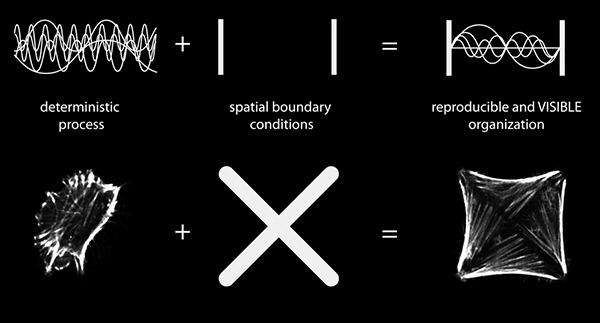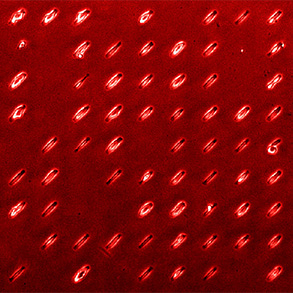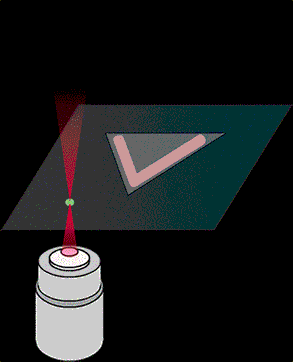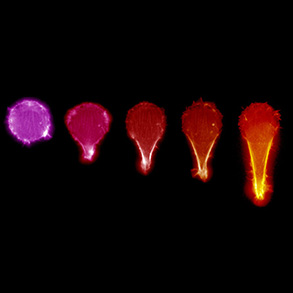Providing spatial cues to self-organization processes
The development of new methods allowing us to observe and analyze cytoskeleton networks in original conditions is one of the keystones of our experimental strategy. We are permanently improving the now “classical” glass surface micropatterning method but also work on its adaptation to other surfaces such as silicones and hygrogels.
In parallel we would like to turn the permanent and flat micropatterns into dynamic and 3D micropatterns. To that end we developed a new laser micropatterning process based on protein-repellent coating ablation with pulses of light. It allows us to 1- perform contact-less micropatterning, 2- control grafted protein density, 3- control micropattern geometry
with a sub-micrometric resolution, 4- design micropatterns in 3D, 5- micropattern multiple proteins successively and 6- perform on-the-fly patterning in the presence of living cells.




